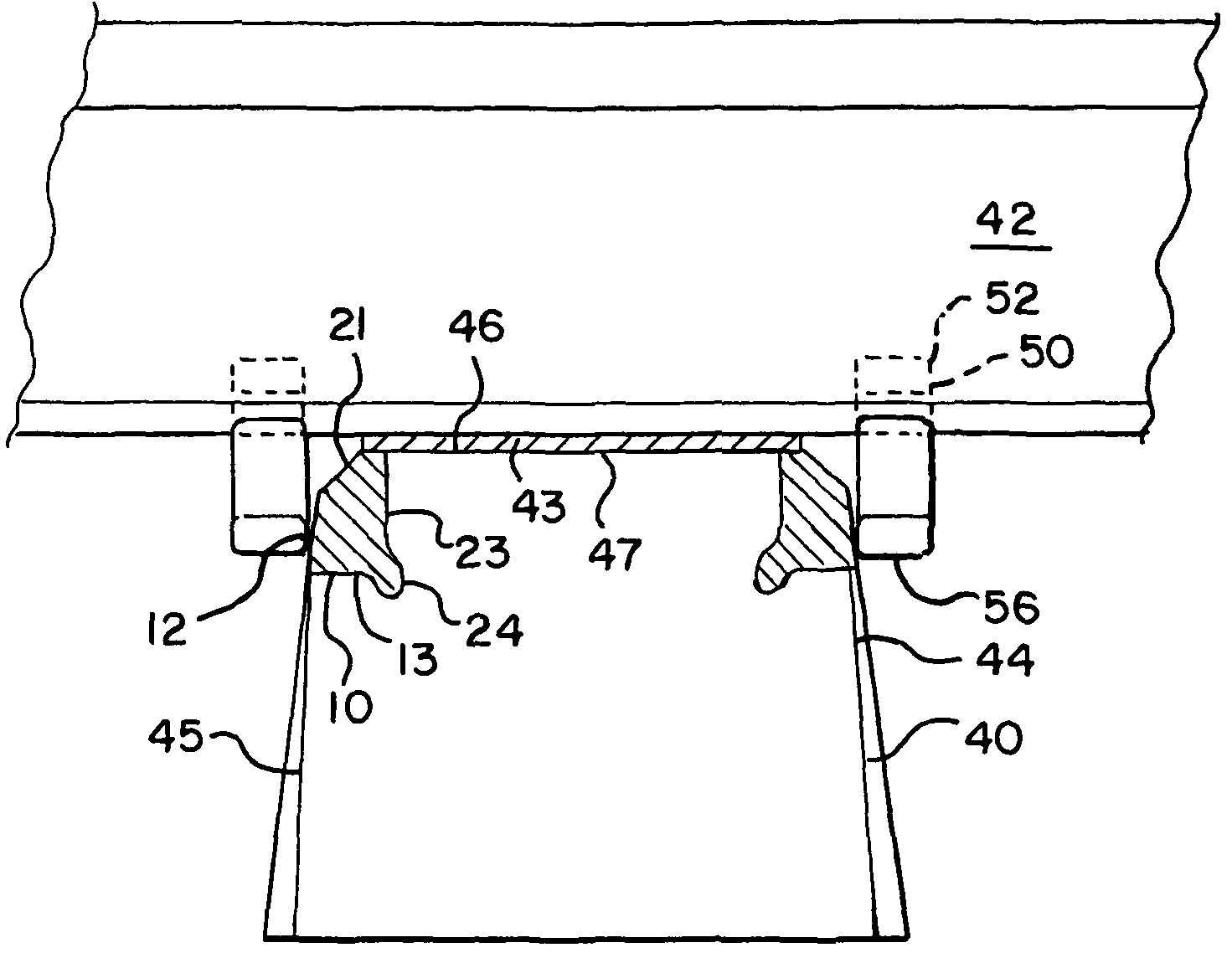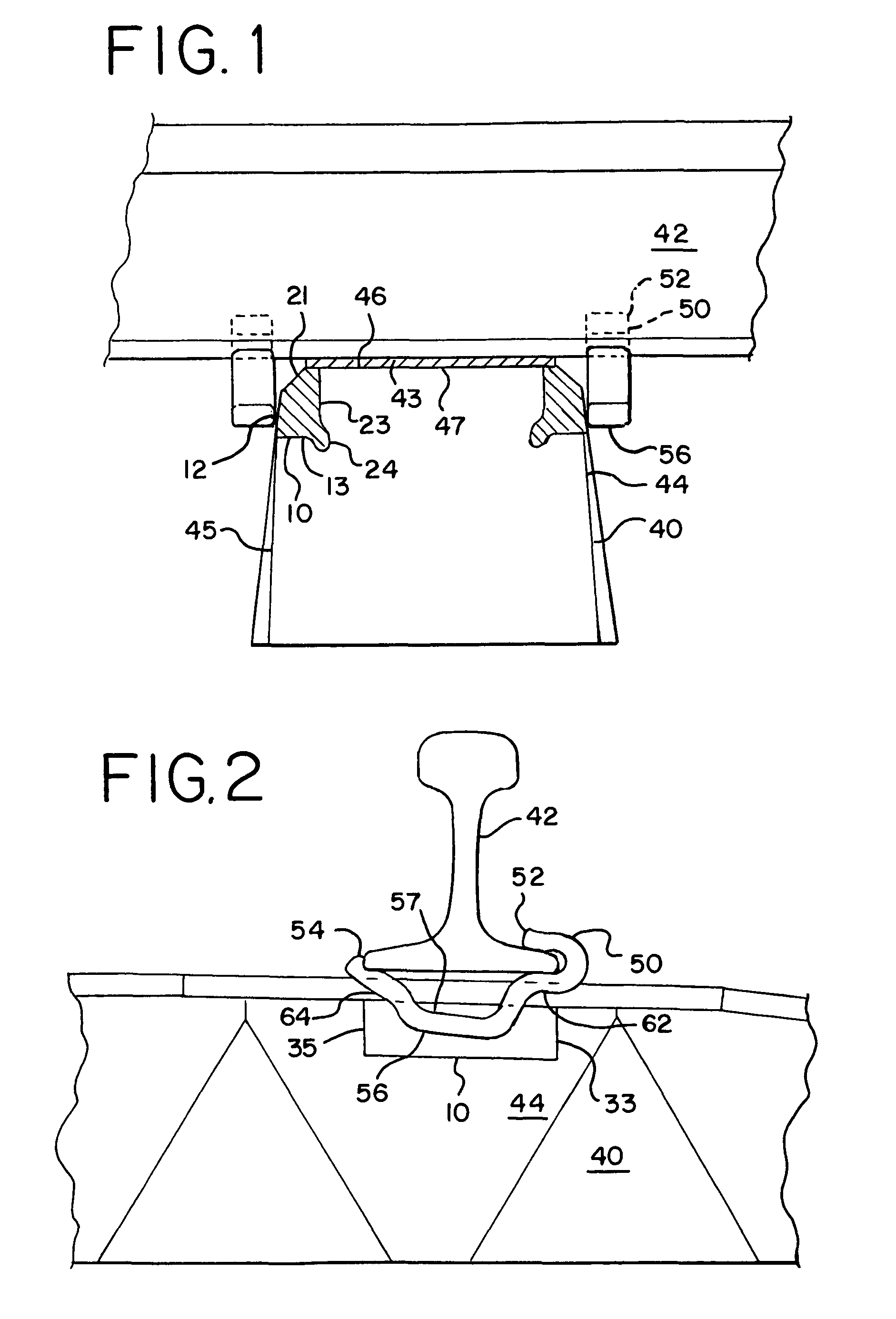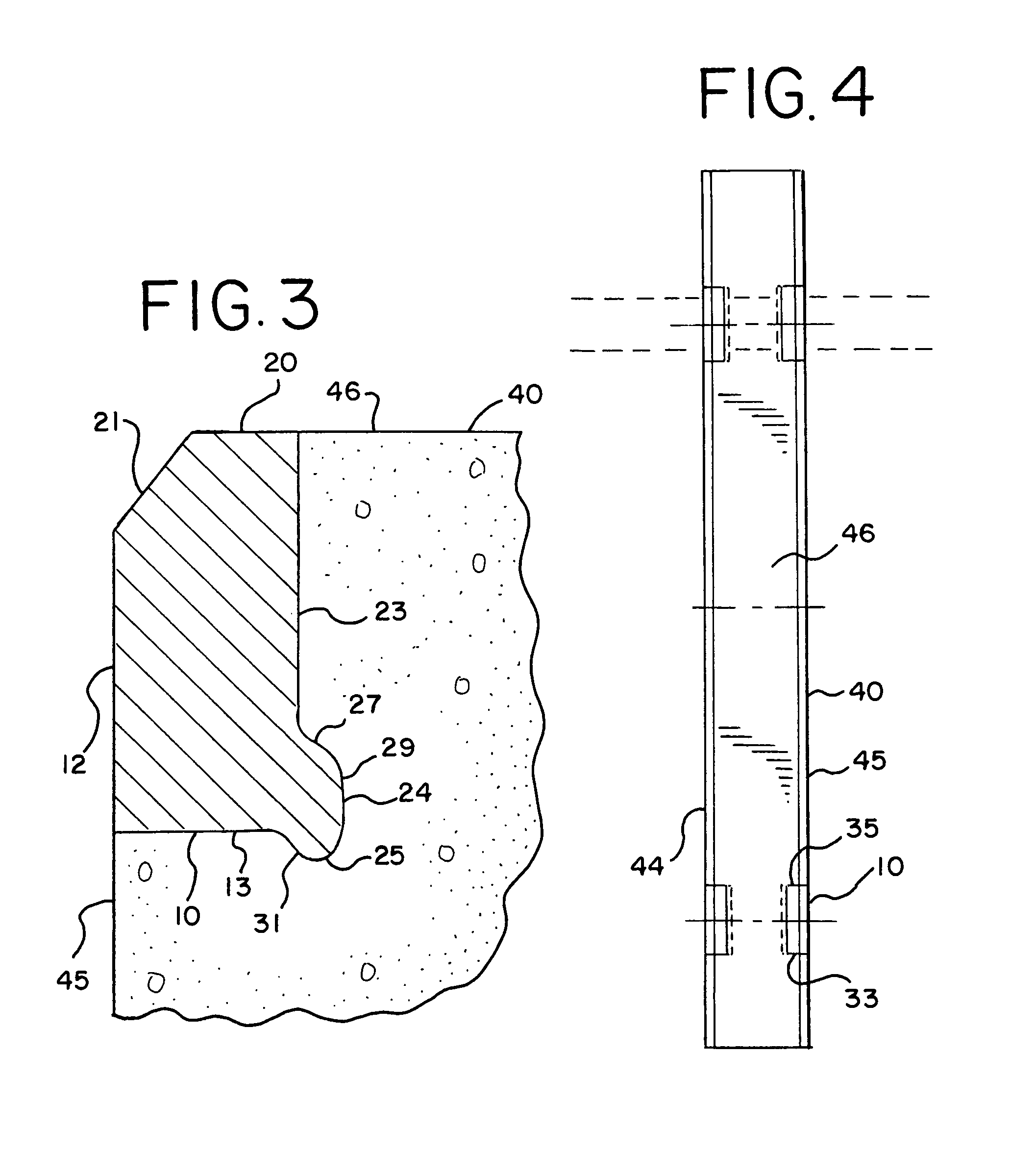Rail anchor isolator for railroad tie
a technology for isolating rail anchors and railroads, which is applied in the direction of tracks, roads, constructions, etc., can solve the problems of concrete tie damage and special problems that aris
- Summary
- Abstract
- Description
- Claims
- Application Information
AI Technical Summary
Benefits of technology
Problems solved by technology
Method used
Image
Examples
Embodiment Construction
[0013]Referring now to FIGS. 1-4, a rail anchor isolator is shown generally at 10. Rail anchor isolator 10 is seen to be of a general rectangular shape in cross-section, and is comprised of front face section 12 and rear face section 23. Top section 20 is seen to extend between and join front face section 12 and rear face section 23. Top section 20 also includes an intermediate section 21 that extends at an acute angle from front face section 12 and top section 20. The surfaces of front face section 12 and rear face section 23 are generally planar. Top section 20 is also generally planar, and generally perpendicular to rear face section 23.
[0014]Rail anchor isolator 10 also includes two side faces 33 and 35.
[0015]Rear face section 23 is seen to be a generally elongated, rectangular structure having a top edge intersecting with top section 20. Rear face section 23 also includes a lower portion which forms part of support section 24. Support section 24 is seen to extend outwardly from...
PUM
 Login to View More
Login to View More Abstract
Description
Claims
Application Information
 Login to View More
Login to View More - R&D
- Intellectual Property
- Life Sciences
- Materials
- Tech Scout
- Unparalleled Data Quality
- Higher Quality Content
- 60% Fewer Hallucinations
Browse by: Latest US Patents, China's latest patents, Technical Efficacy Thesaurus, Application Domain, Technology Topic, Popular Technical Reports.
© 2025 PatSnap. All rights reserved.Legal|Privacy policy|Modern Slavery Act Transparency Statement|Sitemap|About US| Contact US: help@patsnap.com



